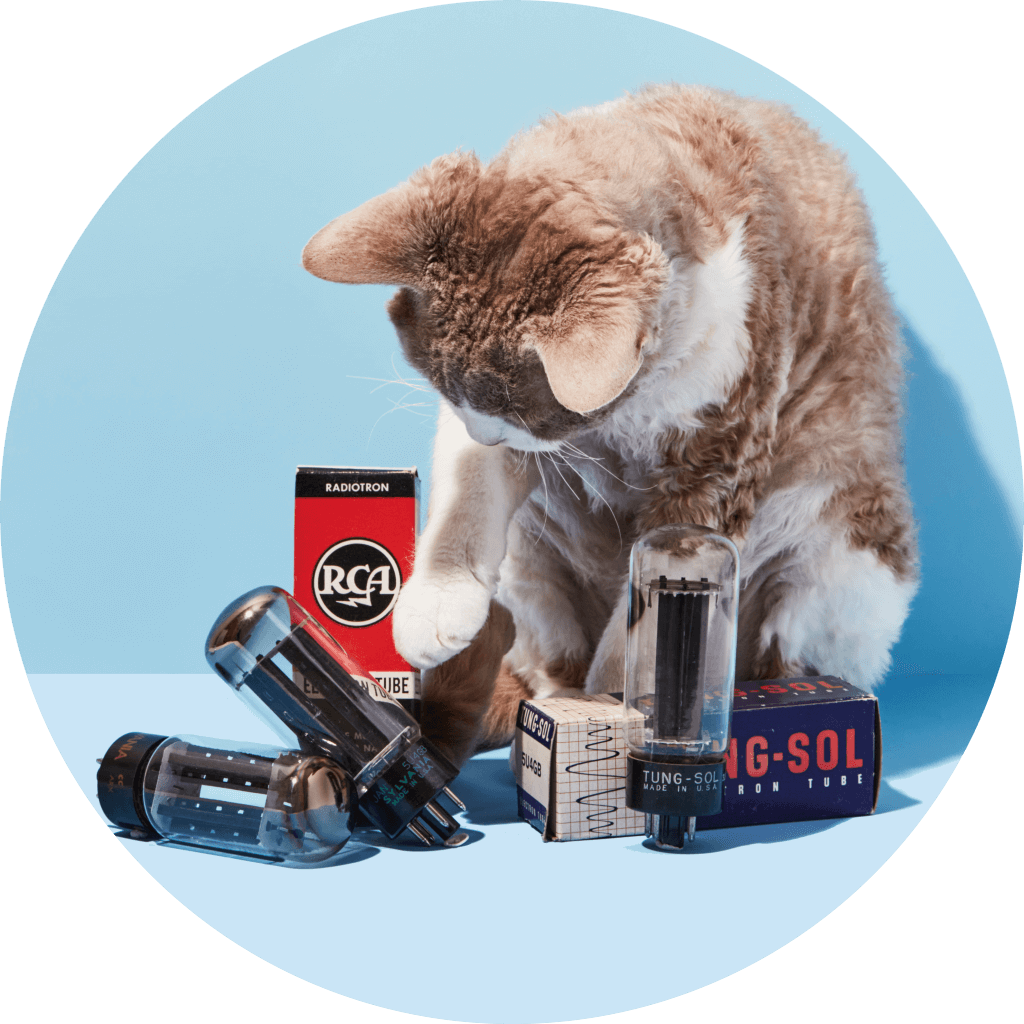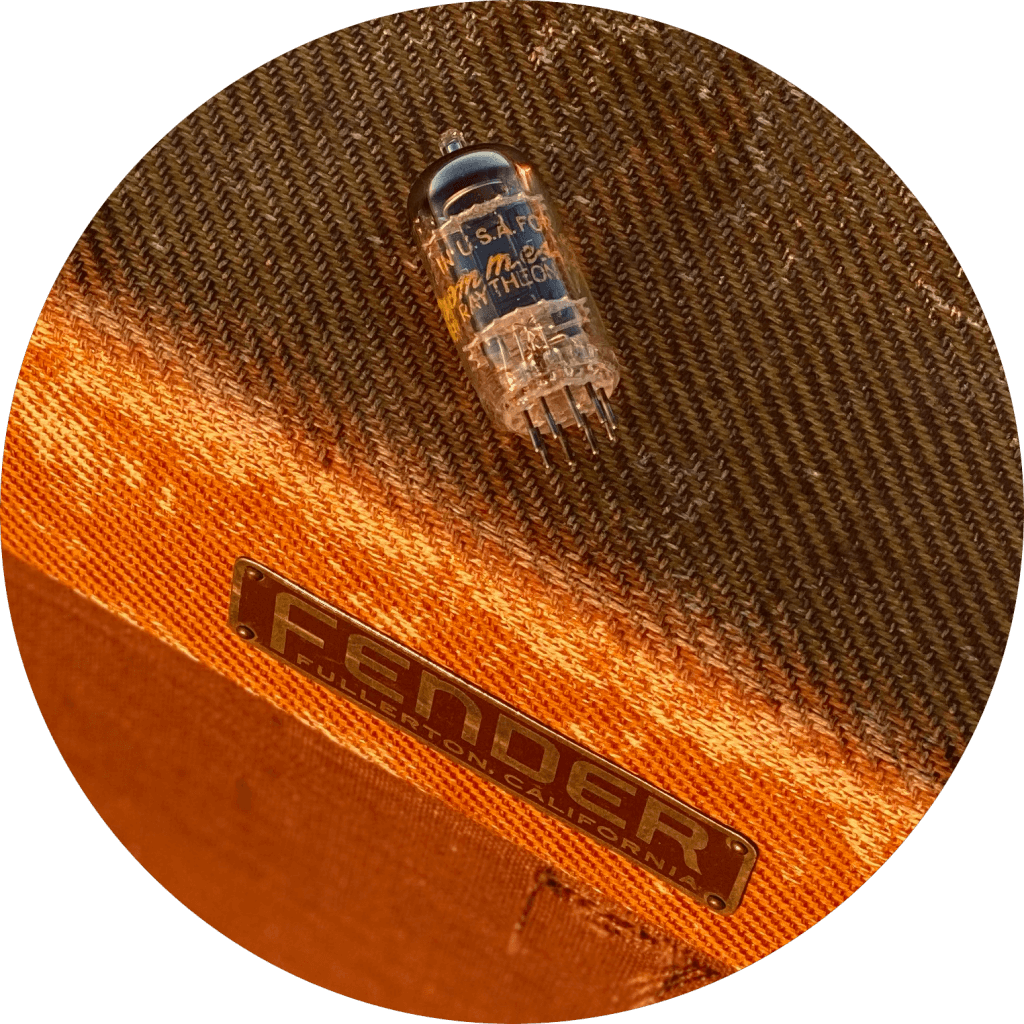The vacuum tubes in your amplifier are the most critical components. Without them, your amplifier will not power on, nor will it allow any signal to pass through to the speaker or output jack. Not only are tubes an integral part of the signal path, in a guitar amp they are responsible for both amplification and tone. In the audio world, they are responsible for amplification, fidelity, noise level, and intangible qualities related to tone. All of this means that the health and performance of your amplifier depend on the condition of its tubes. Because your amplifier is so valve dependent, there are many reasons why replacing your tubes might be necessary to keep your amplifier functioning as it should. We will break down our reasons (for replacing tubes) into three categories, starting with the most obvious.
One bad tube (let alone a few) can create an abundance of issues. The result can be quite a headache if you do not have a replacement set of tubes or a tube tester on hand. The most common reason for starting an inquiry into buying a new tube, a new set of tubes, or even a tube tester, involves improving amplifier health.
Some of the main symptoms of a bad tube include loud hiss, hum, white noise, popping or screeching. These issues can often be heard even at low volume, and when bad enough such noises can make your amp unplayable. A few months ago, we had a vintage amp come through the door with a bad preamp tube. The amp had such a constant loud noise that it could be used as a tremolo, metronome, drum machine, or a steam-engine sound effect. This type of failure is cause by a microphonic tube, and it is one of easiest issues to diagnose.
Recommended Tubes for Reducing Noise:
NOS 7025s of all makes.
Mullard and Telefunken 12AX7s.

The next reason to think about changing your tubes is to improve the tone and overall performance of your amplifier. Each tube, modern and vintage alike, comes with unique tonal qualities that can alter how your amplifier sounds and feels. Think of it as analogous to acoustic guitars. Sure, all acoustic guitars sound, well, like acoustic guitars; but they can vary enormously with respect to frequency balance, sustain, harshness, etc., even within a given model. It is generally not hard to tell a “cheap” guitar from a high-end one. Tubes are much like this. You can have an array of tubes, ranging from low-end ($) to high-end ($), and more often than not it is the higher end tubes that are regarded as “better.”
Guitarists who play a lot, especially with the same amplifier, will be able to tell an immediate difference in tone, volume, and headroom (referring to how loud an amp will get before breakup/distortion) between a bottom-end modern tube and a top-end vintage tube. However, it is important to note that results can depend greatly on the amplifier you are using and your ability and confidence in choosing the correct tube. If in doubt, reach out to us, and we will be happy to help you find you the right tube.
Harmonic and distortion characteristics relate in part to the “amplification factor” or gain of a given tube or type of tube. To put this into context, the 12AX7 has a gain or “amplification factor” of 100 (on average). Compare this to the 12AT7 which has a gain factor of 60 (again on average for new tubes). The 12AX7 is the producing 40% more gain than the 12AT7. Thus, swapping out a 12AX7 for a 12AT7 will produce some interesting results!
Rock legend, Stevie Ray Vaughn famously used 5751 tubes in his Fender tweed style amps to achieve his creamy, heavy and thick edge of breakup/overdrive sound. The 5751 has a gain factor of 70, right in between the 12AX7 and 12AT7, so for some guitarists this tube makes a lot of sense as a substitute. Your volume may suffer but just turn the dial up a bit and you’ve got a whole new amp.
While gain is an important factor in determining tone and volume, there are other important factors, many of which remain somewhat mystical. Two tubes of similar type and gain, but with different construction characteristics can and will sound very different. For example, a vintage RCA black plate will produce a sound quality very different from many modern tubes with similar gain values, as a result of the different harmonic characteristics of the tubes combined with the operating conditions of the amplifier.
Swapping guitar tubes for restoration purposes can make a ton of sense in the right circumstances. If you are interested in returning an amplifier to its original stock condition or are making a truly accurate clone, using period and brand accurate tubes is one of the best ways to make sure your amplifier is performing as it would have decades ago.
This tube buyers guide will not go out of its way to promote NOS (new old stock) tubes over modern tubes, but NOS tubes can have special value based on both tone and authenticity. If someone has gone to the expense and trouble to acquire or restore a vintage amplifier, or if they desire to have an authentic a clone, it makes sense to invest in stock (original for that model) tubes. Not only do they improve resale value, but NOS tubes can be a key element in achieving vintage sound. Modern tubes are great for many types of applications, but they are not great at sounding like vintage tubes.
There are exceptions to the rule that vintage amps require vintage tubes. Some amplifiers require very specific, very expensive NOS tubes. When this is the case, it can make some sense to compromise by using used vintage tubes, reissue tubes, or modern “boutique” variants.
